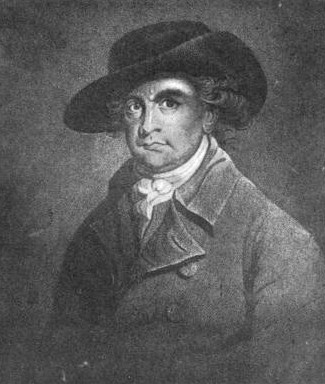- John Pond
Infobox Scientist
name = John Pond
box_width =
image_width = 240px
caption =
birth_date = 1767
birth_place =London ,England
death_date = death date and age|1836|09|07|1767|01|01|df=y
death_place =Blackheath, London ,England
nationality =United Kingdom
field =Astronomy
work_institutions =
alma_mater =Trinity College, Cambridge
doctoral_advisor =
doctoral_students =
known_for =Astronomer Royal
influences =
influenced =
prizes =
footnotes =John Pond FRS ( –
7 September 1836 ) was a renowned English astronomer who became the sixthAstronomer Royal , serving from 1811 to 1835.Biography
Pond was born in
London and, although the year of his birth is known, the records indicating the day and month have been lost to posterity. Pond's father made a fortune as a London merchant, enabling young John to enterTrinity College, Cambridge at the age of sixteen. He took no degree, however, as his course was being interrupted by severe pulmonary attacks which compelled a long residence abroad.Work
In 1800 Pond settled at Westbury near
Bristol , and began to determine star-places with a fine altitude and azimuth circle of 2½ feet (750 mm) in diameter byEdward Troughton . His demonstration in 1806 of a change of form in theGreenwich muralquadrant led to the introduction of astronomical circles at theRoyal Greenwich Observatory and to his own appointment as its head. He was elected a fellow of theRoyal Society on26 February 1807 . That same year he married and set up residence in London.In 1811 Pond succeeded
Nevil Maskelyne asAstronomer Royal . During an administration of nearly twenty-five years, he effected a reform of practical astronomy in England comparable to that brought about byFriedrich Bessel inGermany . In 1821 he began to employ the method of observation by reflection and in 1825 devised means of combining two mural circles in the determination of the place of a single object, the one serving for direct and the other for reflected vision. Under his auspices the instrumental equipment at Greenwich was completely changed and the number of assistants increased from one to six. The superior accuracy of his determinations was attested bySeth Carlo Chandler 's 1894 discussion of them in the course of his researches into the variation of latitude. Between 1810 and 1824 he persistently controverted the reality ofIreland 's Astronomer Royal John Brinkley's imaginary star-parallaxes. During the 1829-31 period, he briefly served as Superintendent of theNautical Almanac . Delicacy of health obliged his retirement in the autumn of 1835.Among his honors were the Jerome Lalande Prize, which was conferred upon him in 1817 by the
French Academy of Sciences of which he was a corresponding member, and theCopley Medal , presented in 1823. He published eight folio volumes of Greenwich Observations, translatedPierre-Simon Laplace 's "Système du monde" and contributed thirty-one papers to scientific collections. His 1833 catalogue of positions of 1112 stars was of great value and displayed an accuracy which had previously never been achieved.As Astronomer Royal, Pond was responsible for a substantial modernisation of the Observatory at Greenwich, extending from equipment improvements to new working practices. Perhaps his most noticeable addition was the 1833 installation of the
time ball on the roof of the Observatory. Arguably, the first public time signal in theUK , the occurs daily at 1:00 p.m. and was intended to aid mariners on theThames to synchronise theirmarine chronometer s.John Pond died in
Blackheath, London in the year of his 69th birthday and was buried beside and near fellow Astronomers RoyalEdmond Halley andNathaniel Bliss , respectively, in the churchyard of St Margaret's in nearby Lee.ee also
*
Pond Inlet, Nunavut References
###@@@KEY@@@###
Wikimedia Foundation. 2010.
